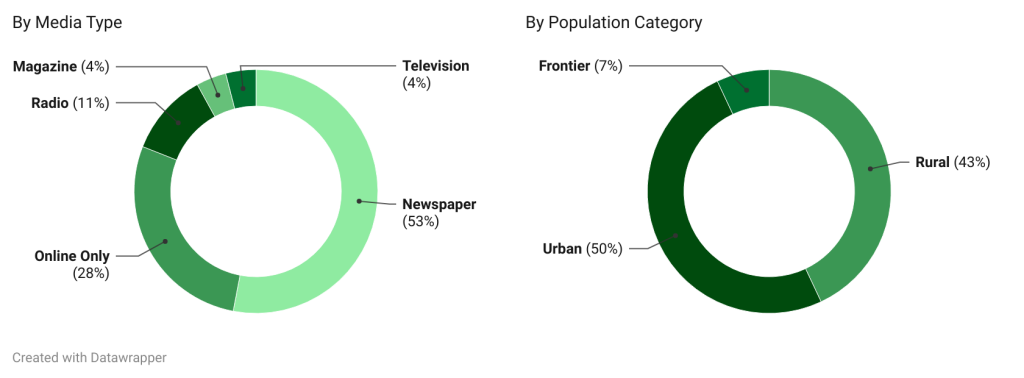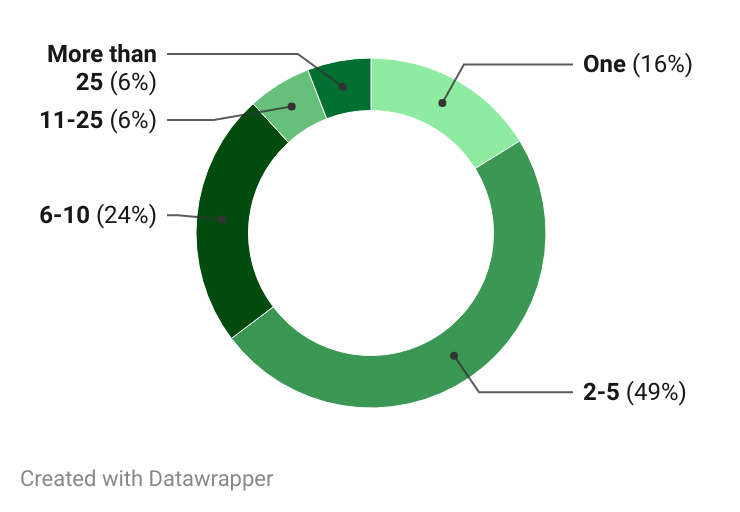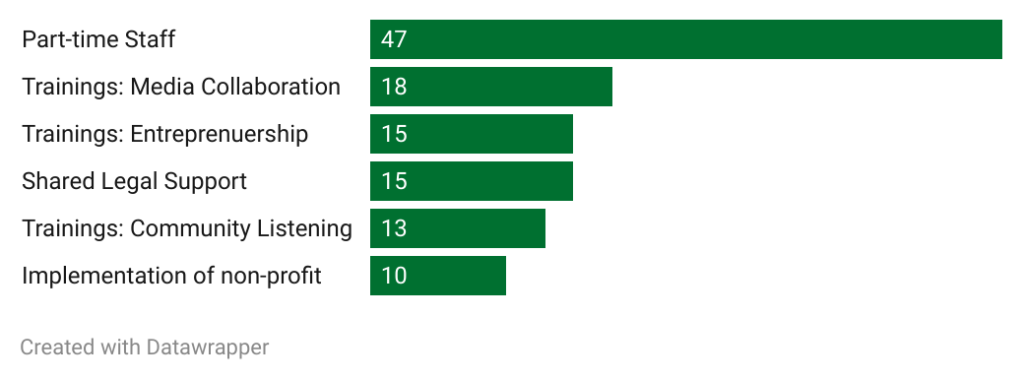During the summer of 2024, the Agora Journalism Center conducted an online survey to gather information directly from Oregon’s newsrooms about their resources and challenges. We heard from nearly 70 journalists who told us about their staff size, funding priorities, and about the key local news sources people in their communities turn to. Although the respondents are a non-random subset of all of Oregon’s newsrooms, these responses do provide a clearer sense of local journalism needs.1 Because this survey is not based on a random sampling of news outlets around the state, but rather on the voluntary responses of Oregon Media Collaborative members, the statistics reported here are not necessarily generalizable to all journalists or newsrooms in Oregon. For example, the preponderance of very small newsrooms among our respondents suggests the eagerness of stretched-thin journalists to participate in studies like these that can raise awareness of their work and its challenges.
Breakdown of Respondents

Approximate size of your newsroom
Including full-time editors, reporters, and other staff

In answer to the question, “what are the top 2 or 3 other organizations where people in the communities you serve are getting their local news and information?”, many respondents to our survey—the majority of whom work at newspapers—mentioned local TV and radio stations along with social media, particularly Facebook. Local newspapers still maintain a strong presence in some regions of the state. Publications like the Bend Bulletin and the Corvallis Gazette-Times were frequently cited, along with statewide outlets such as The Oregonian and Willamette Week. In addition, respondents mentioned newsletters—both from local governments and private organizations—as important ways people stay informed about community events and updates.
Recognizing the financial constraints many local news outlets are operating under, we also asked, “If there was a pool of money to share among journalists and media organizations, how would you suggest spending it to meet your community’s information needs?” Among six pre-defined responses—part-time staff, shared legal support, entrepreneurship and sustainability training, non-profit models, community listening, and media collaborations—70% of respondents selected hiring part-time staff as their top priority, with many respondents emphasizing the need for more personnel to be able to regularly produce local news content. Other options received support from 15% to 27% of this group, especially trainings in media collaborations—an important way that resource-challenged outlets can pool resources to produce local news—and in community engagement techniques. Some respondents also mentioned hiring full-time staff or shared regional reporters, while others suggested pooling resources for advertising sales in local publications.

NEXT » Building a “Three-Legged Stool” to Support Civic News and Information